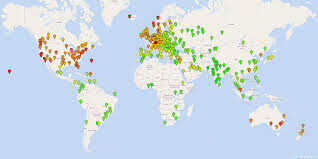In a historic pivot, central banks around the world now hold more gold than U.S. Treasuries—a milestone unseen since 1996. As of mid-2025, gold holdings sit at around $4.5 trillion, while U.S. Treasury reserves amount to approximately $3.5 trillion.
What’s Driving Central Banks to Gold?
This seismic shift is fueled by several key forces:
- Rising geopolitical tensions and inflation fears are encouraging central banks to seek tangible, stable assets.
- Growing concerns over U.S. debt sustainability and the independence of monetary institutions are undermining trust in Treasuries.
- Strategic reserve diversification: Gold, seen as impervious to sanctions or political manipulation, is becoming the go-to asset for sovereign safety nets.
The Numbers Tell the Story
- Gold now accounts for roughly 27% of global central bank reserves, overtaking Treasuries’ share of 23%.
- Central banks have been net buyers of over 1,000 metric tonnes of gold annually for the past three years—twice the accumulation rate of the previous decade.
What This Means Going Forward
This trend signals a structural shift in monetary strategy. Far from being a temporary flight to safety, the move reflects long-term recalibration of global finance—echoing a time when gold served as the cornerstone of reserve strategy in the 1970s. As market volatility and political risks persist, analysts expect central banks to continue leaning into gold holdings.










